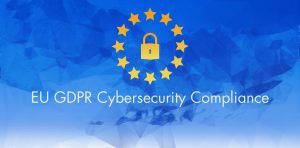As more and more businesses move online, the potential for cyber threats increases. As such, the importance of website security cannot be overstated. A secure website not only protects your business but also your customers’ sensitive information.
The risks of not securing a website are significant. Cybercriminals can compromise sensitive customer data, including credit card numbers and personal information, through data breaches caused by cyber threats. This can result in financial loss, damage to your business’s reputation, and even legal consequences.
Search engines may blacklist websites infected with malware, causing a considerable decrease in website traffic. In some cases, you may even need to rebuild your website from scratch.
It should be noted that securing your website is not just about protecting your business—it’s about safeguarding your customers’ trust in your online presence. In the following sections, we will delve deeper into how to secure your website from cyber threats.
Understanding Cyber Threats
In the realm of website security, understanding the common cyber threats is the first step towards safeguarding your online presence. Let’s delve into some of these threats:
Malware: This is malicious software designed to cause harm to your website. It can take various forms, including viruses, worms, and ransomware. For instance, in 2017, the WannaCry ransomware attack affected hundreds of thousands of computers across 150 countries, causing billions of dollars in damages.
Phishing: This involves attackers posing as trustworthy entities to trick users into revealing sensitive information, such as passwords or credit card numbers. In 2016, someone sent a phishing email that caused the Hillary Clinton presidential campaign to leak thousands of internal emails.
SQL Injection: This occurs when an attacker uses malicious SQL code to manipulate your database, leading to data theft, data loss, or denial of service. In 2008, Heartland Payment Systems suffered a data breach due to an SQL injection, resulting in the theft of 130 million credit card numbers.
These are just a few examples of the many cyber threats that exist today. By understanding these threats, you can better prepare your website and implement effective security measures.
Importance of Regular Updates
Regular updates play a crucial role in website security. Updates often patch security vulnerabilities discovered since the last version. By regularly updating your software and platform, you can ensure that you’re protected against these vulnerabilities.
Outdated software can make your website vulnerable in several ways. Hackers constantly seek out websites that run outdated software because they can exploit them more easily. The 2017 Equifax data breach, which exposed personal information of 147 million individuals, occurred because a web application was running unpatched software.
Moreover, outdated software may not be compatible with newer technologies, which can lead to performance issues and even downtime. It can also lack the latest features and improvements, leading to a subpar user experience.
Regular updates are a simple yet effective way to enhance your website’s security and performance. By staying on top of these updates, you can protect your website from cyber threats and provide a better experience for your users.
Secure Hosting – To Keep Cyber Threats At Bay
Choosing a secure hosting platform is a critical step in protecting your website from cyber threats. A secure hosting platform provides robust security measures, including firewalls, intrusion detection, and regular security audits. For instance, hosting platforms like SiteGround and Bluehost offer these features and are known for their strong security measures.
In addition to these security features, a secure hosting platform also provides reliable customer support. If you encounter any security issues, having a responsive and knowledgeable support team can make a big difference.
Another crucial aspect of secure hosting is the use of SSL certificates. SSL (Secure Sockets Layer) is a security protocol that encrypts the connection between a web server and a browser. This ensures that all data passed between the web server and browsers remain private and integral.
An SSL certificate is a digital certificate that authenticates the identity of a website and enables an encrypted connection. Websites with SSL certificates have URLs that start with “https” instead of “http”, and most modern browsers display a padlock icon in the address bar for these sites.
The importance of SSL certificates cannot be overstated. They not only protect your website’s data but also help build trust with your visitors. Many people look for the padlock icon before entering sensitive information like credit card numbers or passwords. Moreover, search engines like Google give a ranking boost to websites with SSL certificates, making them an essential part of SEO.
It’s worth noting that secure hosting and SSL certificates are fundamental components of website security. By investing in a secure hosting platform and an SSL certificate, you can protect your website and your visitors from cyber threats.
Strong Password Policies Approach To Avoiding Cyber Threats
In the realm of website security, implementing strong password policies is a crucial step. Passwords are often the first line of defense against unauthorized access, and a strong, unique password can make it significantly harder for cybercriminals to breach your website.
The importance of strong, unique passwords cannot be overstated. A strong password is typically at least 12 characters long and includes a mix of uppercase and lowercase letters, numbers, and special characters. It should not include easily guessed information like your name, birthdate, or common words. A unique password, on the other hand, is one that you haven’t used elsewhere. Using the same password for multiple accounts can put all your accounts at risk if one gets compromised.
In addition to strong, unique passwords, implementing two-factor authentication (2FA) can add an extra layer of security to your website. 2FA requires users to provide two forms of identification when logging in, typically something they know (like a password) and something they have (like a mobile device to receive a verification code). This means that even if a cybercriminal manages to guess or steal a password, they still won’t be able to access the account without the second factor.
Remember that strong password policies are a fundamental component of website security. By enforcing the use of strong, unique passwords and implementing two-factor authentication, you can significantly enhance the security of your website.
Avoiding Cyber Threats through Use of Regular Backups
Regular backups play a crucial role in website security. They provide a safety net for your website data, allowing you to restore your website to a previous state in case of data loss or a cyber attack.
The role of regular backups in website security is multifaceted. Firstly, in the event of a cyber attack, such as a ransomware attack, having a recent backup can allow you to restore your website without paying the ransom. Secondly, backups can also protect against data loss due to human error, such as accidentally deleting important files. Lastly, in case of a catastrophic event, like a server failure, backups can ensure that your website can be quickly restored and back online.
There are several backup options available, each with its own pros and cons. Manual backups involve manually copying your website files and database and storing them in a secure location. While this method gives you full control over the backup process, it can be time-consuming and easy to forget.
Automatic backups, on the other hand, are performed automatically at set intervals by your hosting provider or a third-party service. This ensures that your backups are always up-to-date, but it may require a subscription fee.
Cloud backups involve storing your backups on a cloud service like Google Drive or Dropbox. This provides an extra layer of security, as your backups are stored off-site and can be accessed from anywhere. However, this option may also require a subscription fee, depending on the amount of storage space needed.
Regular backups are indeed an essential part of website security. By choosing the right backup option for your needs, you can protect your website and ensure that you’re prepared for any eventuality.
Firewalls and Security Plugins
Firewalls and security plugins are essential tools in securing your website from cyber threats. They serve as the first line of defense, protecting your website from malicious attacks and unauthorized access.
Website firewalls work by monitoring and filtering incoming traffic to your website. They can block malicious requests, such as those attempting SQL injection or cross-site scripting attacks, and allow legitimate traffic to pass through. For instance, Cloudflare and Sucuri are popular services that provide website firewalls.
Security plugins, on the other hand, offer a range of features to enhance your website’s security. These may include malware scanning, spam protection, login security, and more. For WordPress users, plugins like Wordfence and iThemes Security are popular choices.
These tools can significantly enhance your website’s security. A firewall can protect against external threats, while security plugins can help secure your website from the inside. However, it’s important to remember that these tools are just one part of a comprehensive security strategy. Regular updates, strong passwords, and regular backups are also crucial in maintaining a secure website.
In conclusion, firewalls and security plugins are powerful tools in your website security arsenal. By understanding how they work and implementing them effectively, you can significantly reduce the risk of cyber threats to your website.
Monitoring and Detecting Cyber Threats
Monitoring your website activity and detecting threats is a crucial part of website security. It allows you to identify potential security issues before they cause significant damage and respond promptly when a threat is detected.
There are several tools and practices for monitoring website activity and detecting threats. These include security plugins, web application firewalls, and intrusion detection systems. For instance, security plugins like Wordfence for WordPress can monitor your website for malware infections, brute force attacks, and suspicious behavior. Web application firewalls can detect and block malicious traffic, while intrusion detection systems can alert you to any unauthorized access attempts.
In addition to these tools, regular audits of your website can also help detect potential threats. This involves checking your website for any changes or anomalies, such as new admin accounts, modified files, or unusual traffic patterns.
When a threat is detected, the first step is to identify the nature of the threat. This could involve analyzing log files, scanning for malware, or reviewing recent changes to your website. Once you’ve identified the threat, you can then take appropriate action. This might involve removing malware, blocking malicious IP addresses, or restoring your website from a backup.
As such, monitoring and detecting threats is a proactive approach to website security. By keeping a close eye on your website activity and responding promptly to threats, you can protect your website and your users from cyber threats.
Educating Your Team On How To Address Cyber Threats
Human error plays a significant role in website security. In fact, studies have shown that human error is one of the leading causes of data breaches. This can include mistakes such as using weak passwords, clicking on phishing links, or accidentally deleting important files.
Given the role of human error in website security, educating your team about security best practices is crucial. This involves training your team on how to recognize and avoid common threats, such as phishing emails or malicious websites. It also involves teaching them best practices for password security, such as using strong, unique passwords and enabling two-factor authentication.
In addition to training, it’s also important to foster a culture of security within your team. This means making security a priority in all aspects of your business, from development and design to marketing and customer service. It also means encouraging your team to stay informed about the latest threats and security trends.
In conclusion, while tools and technologies are important for website security, the human element should not be overlooked. By educating your team and fostering a culture of security, you can significantly reduce the risk of human error and enhance the overall security of your website.
Takeaways
In this guide, we’ve explored the steps to secure a website from cyber threats. We began by understanding common threats like malware, phishing, and SQL injection. The discussion moved on to the importance of regular updates and choosing a secure hosting platform. Strong password policies and regular backups were highlighted as crucial security measures. We also delved into the role of firewalls and security plugins in protecting your website. Finally, we emphasized the importance of monitoring website activity, detecting threats, and educating your team about security best practices.
Securing a website from cyber threats is not a one-time task, but an ongoing commitment. It requires vigilance, regular updates, and a proactive approach to identifying and addressing threats. Remember, the security of your website is not just about protecting your business—it’s about safeguarding the trust and confidence of your users.
So, whether you’re running a personal blog or an e-commerce platform, take website security seriously. Stay informed, stay vigilant, and stay secure.









